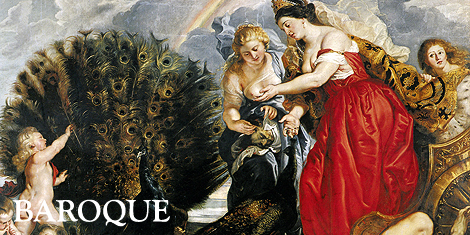
FROM THE GOLDEN AGE TO THE ENLIGHTENMENT
Rubens and Rembrandt – The two best-known painters of the seventeenth century were friends and rivals at the same time. Their works are among the highlights of any museum collection, including that of the Wallraf.
Peter Paul Rubens (1577 – 1640), the Antwerp-based master, is represented here with a number of paintings covering all the periods of his creative life. Above all the large-format Juno and Argus, dating from 1610, continues to impress us by dint of its painterly brilliance and breathtaking pictorial language. Rembrandt van Rijn (1606 – 1669), doubtless the most important Dutch painter, is represented by his late self-portrait. This puzzling masterpiece is one of the highlights of the Baroque department.
Also prominently represented in the Wallraf collection are three pupils and colleagues of Rubens, Jacob Jordaens, Frans Snyders and Antony van Dyck, together with Rembrandt’s compatriots Frans Hals, Gerard van Honthorst and Pieter de Hooch. After Rembrandt’s death in 1669, the influence of French fashions increased, which was generally interpreted as a decline. But the fact that this era has some high-calibre masterpieces to offer is demonstrated by, among other works, a bravura piece by Gerard de Lairesse.
In the eighteenth century too, the Age of Enlightenment, European culture was dominated by the French with their courtly way of life, their art and their language. Works by François Boucher, and Nicolas de Largillierre, not to mention a joint work by Jean-Honoré Fragonard and his pupil Marquerite Gérard, reflect the new spirit of the Enlightenment.
But take a look for yourself with a virtual tour of the Baroque Department.





